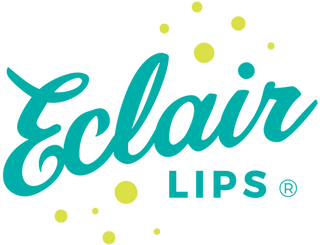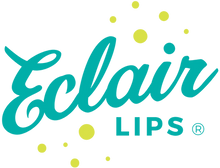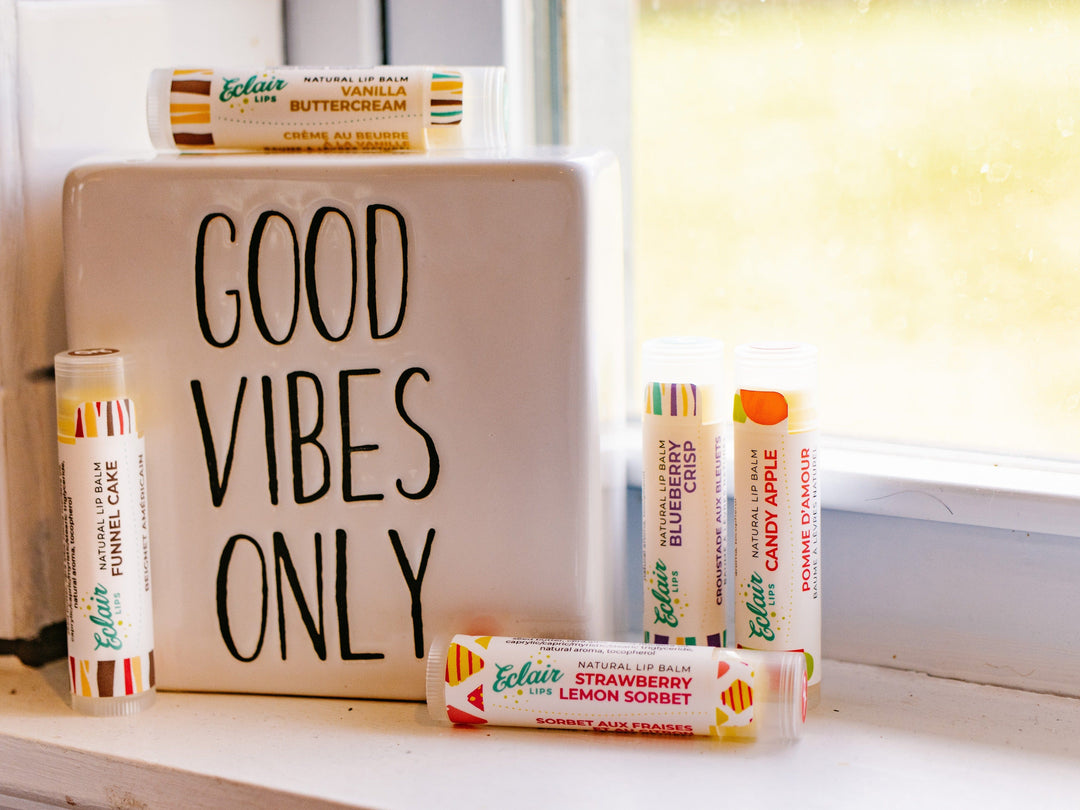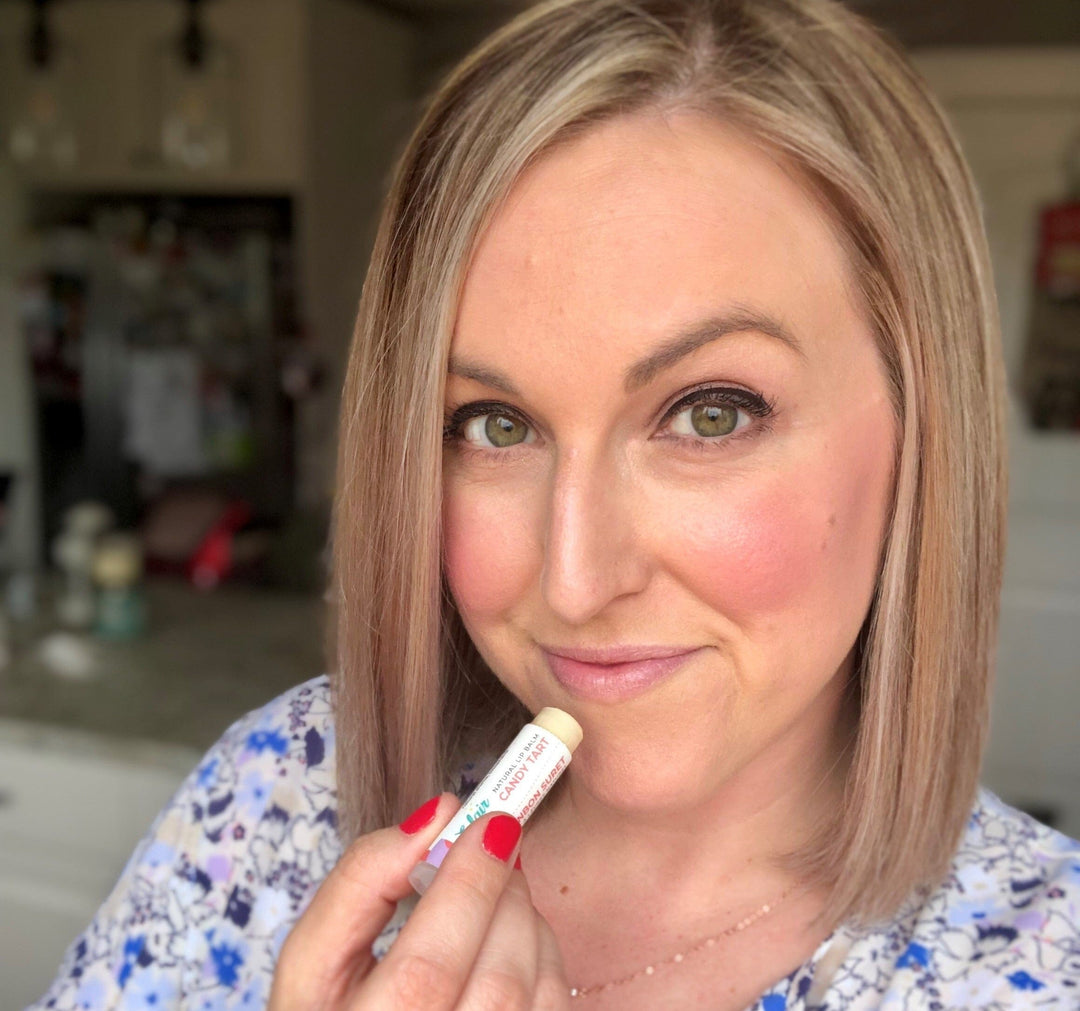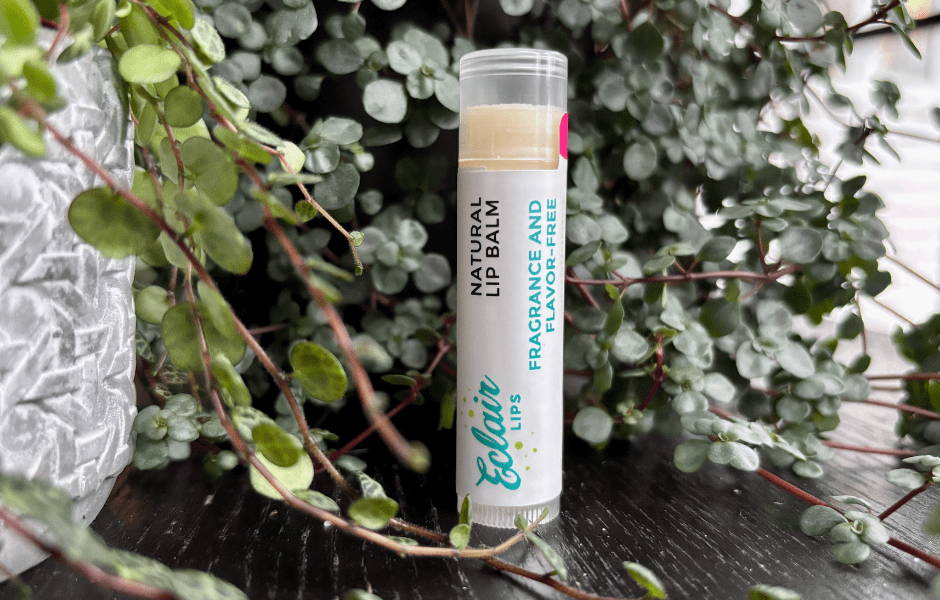Best Lip Balm for Cracked Corners of Mouth: Angular Cheilitis Relief
Finding Relief When the Corners of Your Mouth Won't Heal
If you've noticed painful cracks at the corners of your mouth that just won't heal no matter how much regular lip balm you apply, you're dealing with something different from typical chapped lips. Those persistent splits and sore patches at the mouth corners have a specific name: angular cheilitis. And while the right lip balm can absolutely help with comfort and protection, this condition usually needs more than just moisturizing to fully resolve.
Angular cheilitis happens when the corners of your mouth become irritated, cracked, and sometimes infected. The cracks can be shallow or deep, and they often sting when you open your mouth to eat, talk, or smile. It's frustrating because regular lip care routines that work perfectly for dry lips don't seem to make a dent in those stubborn corner cracks.

The key thing to understand is that angular cheilitis often has an underlying cause that needs to be addressed alongside protective lip care. We're going to walk through what causes those corner cracks, how the right lip balm can help protect and soothe the area, and when you need to see a healthcare provider for proper treatment.
Quick Takeaway
- Angular cheilitis is cracking at mouth corners, not just regular chapped lips
- Common causes include yeast/bacterial overgrowth, saliva buildup, vitamin deficiency, or ill-fitting dentures
- Protective lip balm helps with comfort but won't cure the underlying cause
- Look for balms with zinc oxide, lanolin, or thick occlusive ingredients
- See a doctor if corner cracks don't improve within 1-2 weeks
Contents
What Is Angular Cheilitis and Why Is It Different from Chapped Lips?
Angular cheilitis (also called perleche) shows up as red, cracked, painful splits specifically at the corners of your mouth. Regular chapped lips affect the entire lip surface and usually respond well to basic moisturizing. But angular cheilitis tends to stick around stubbornly in those corner areas, and it often involves more than just dryness.
The corners of your mouth are prime spots for moisture to collect, especially if you drool slightly during sleep, have deep laugh lines, or wear braces or dentures that change how saliva moves around your mouth. That trapped moisture creates the perfect environment for yeast or bacteria to grow, which is why angular cheilitis frequently involves infection alongside the cracking.
Dermatological research shows that angular cheilitis is often caused by a combination of factors: moisture and yeast or bacteria at the mouth angles create inflammation and cracking. This is fundamentally different from weather-related chapped lips, which is why your usual winter lip balm might not be cutting it for those corner cracks.
What Causes Those Persistent Corner Cracks?
Understanding what's behind your angular cheilitis helps explain why treatment usually involves more than just slathering on balm. Here are the most common culprits:
Yeast or bacterial overgrowth: Candida (yeast) is the most frequent cause of angular cheilitis. The warm, moist environment at mouth corners lets yeast thrive, leading to infection and cracking. Bacterial infections (often Staphylococcus) can also develop in cracked corners.
Saliva buildup: If saliva pools at the corners of your mouth (from drooling during sleep, mouth breathing, or deep facial creases), it keeps that area constantly moist. As the saliva evaporates, it actually dries out and irritates the skin, creating cracks where infection can take hold.
Nutritional deficiencies: Low levels of iron, vitamin B12, or folate can make you more prone to angular cheilitis. If your body lacks these nutrients, your skin doesn't heal as efficiently and becomes more susceptible to cracking and infection.
Ill-fitting dentures: Dentures that don't fit properly can change the way your mouth closes, creating folds at the corners where saliva collects. Over time, this constant moisture leads to irritation and cracking.
Weakened immune system: Conditions like diabetes or immune disorders make it harder for your body to fight off the yeast or bacteria that cause angular cheilitis.
How Lip Balm Helps (And Its Limitations)
A protective lip balm plays a supporting role in managing angular cheilitis, but it's important to understand what it can and can't do. Lip balm creates a moisture barrier that protects cracked corners from further irritation, helps prevent saliva from constantly wetting the area, and can soothe discomfort. But it won't eliminate an underlying yeast or bacterial infection, and it won't address nutritional deficiencies.
Think of lip balm as part of your care routine, not the cure. If you have angular cheilitis caused by Candida overgrowth, you'll likely need an antifungal cream (often available over the counter, or by prescription for stubborn cases). If bacteria are involved, you might need a topical antibiotic. The lip balm you use alongside these treatments helps keep the healing skin protected and comfortable.
Ingredients That Actually Help Protect Cracked Corners
When you're choosing a lip balm for angular cheilitis, certain ingredients work better than others for creating that protective barrier you need:
Zinc Oxide
Zinc oxide does double duty: it creates a thick physical barrier that keeps moisture and irritants away from healing skin, and it has mild antimicrobial properties. Zinc oxide is particularly helpful for angular cheilitis because it protects against both moisture and microbial growth. You'll often find it in diaper rash creams for similar reasons (protecting skin that's prone to moisture and yeast).
Look for lip balms or protective ointments that list zinc oxide in the first few ingredients. Products marketed for sensitive skin or as "barrier creams" often contain higher concentrations of zinc oxide.
Lanolin
Lanolin (wool fat) is an incredibly occlusive ingredient that creates a strong moisture seal. It's thicker than most plant oils and butters, which makes it excellent for protecting cracked corners that need serious barrier support. Dermatological research shows lanolin is an effective emollient, though some people have lanolin allergies, so patch-test first if you're unsure.
Pure medical-grade lanolin (available at pharmacies) can be applied directly to corner cracks for maximum protection, or you can look for lip balms with lanolin high on the ingredient list.
Petroleum Jelly (Petrolatum)
Plain petroleum jelly might not be glamorous, but it's a gold standard for protecting damaged skin. It forms an occlusive layer that prevents water loss and keeps irritants out. Research on lip care shows white petrolatum locks in moisture and shields against environmental factors more effectively than lighter balms.
If you're dealing with painful, deep cracks at your mouth corners, applying a thick layer of petroleum jelly multiple times daily (especially at night) gives you maximum barrier protection while your skin heals.

Recommended Lip Balms for Angular Cheilitis Comfort
While your angular cheilitis might need medical treatment to fully resolve, these types of lip balms can help protect and comfort the area:
For Maximum Protection: Fragrance-Free Options
When your corner cracks are painful and inflamed, the last thing you need is fragrance or flavour irritating them further. A gentle, protective balm gives you the moisture barrier you need without any potentially irritating additives.
Fragrance-free formulas work well because they use simple, effective ingredients (cocoa butter, beeswax, coconut oil) that create protection without the risk of stinging or allergic reactions. This is especially important if you're also using medicated creams, since you don't want fragrance ingredients interfering with treatment.
For Heavy-Duty Barrier: Thick Occlusive Balms
Look for balms with beeswax high on the ingredient list. Beeswax creates a firm, protective layer that holds up better against constant moisture exposure than oil-heavy formulas. When beeswax is combined with butters like cocoa butter or shea butter, you get a balm that stays in place and really seals in moisture.
If you have deep laugh lines or facial creases where saliva tends to collect, you need a balm that won't just slide right off. The thicker consistency of beeswax-based balms gives you that staying power.
For Variety and Trial: Discovery Options
If you're not sure which type of balm will work best for your cracked corners, trying a few different formulas lets you test different textures and ingredient combinations. Some people find oil-rich balms more comfortable, while others prefer firmer, waxy textures. Finding what feels right for your specific situation makes a difference in how consistently you'll apply it.
Application Tips for Cracked Corners
How you apply your protective balm matters just as much as which balm you choose:
Keep the area dry between applications: Before applying balm, gently pat the corners of your mouth completely dry. Don't apply balm to wet or damp skin, as this can trap moisture and make things worse.
Apply generously and frequently: Don't be stingy. You want a visible layer of balm covering the entire cracked area and extending slightly beyond it. Reapply after eating, drinking, or wiping your mouth.
Use before bed: This is when saliva is most likely to pool at your mouth corners. Apply a thick layer of protective balm (or plain petroleum jelly) right before sleep to create a barrier that lasts through the night.
Avoid licking: Saliva makes angular cheilitis worse, so resist the urge to lick your lips or the corners of your mouth. When you feel that urge, apply more balm instead.
| Balm Type | Best For | Key Benefit | When to Use |
|---|---|---|---|
| Zinc oxide balms | Active angular cheilitis with moisture exposure | Creates antimicrobial barrier; protects from wetness | Apply during the day, especially before meals |
| Lanolin-based | Deep, painful cracks needing maximum occlusion | Extremely protective seal; intensive moisture lock | Best for nighttime and very dry conditions |
| Petroleum jelly | Severe cracking; medical treatment support | Medical-grade barrier; no irritants | Layer thickly at bedtime; safe with prescriptions |
| Fragrance-free natural balms | Mild cases; sensitive skin; daily prevention | Gentle protection without irritation risk | Regular daily use; good for maintenance after healing |
When Lip Balm Isn't Enough: Signs You Need Medical Help
This is the crucial part: if your corner cracks aren't noticeably improving within 1-2 weeks of careful home care, you need to see a doctor or dentist. Angular cheilitis that persists usually needs prescription treatment to clear up the underlying infection or address other causes.
See a healthcare provider if you notice:
- Deep cracks that bleed: This suggests significant tissue damage that needs medical assessment
- Spreading redness or swelling: Infection may be worsening
- Severe pain: Especially if it interferes with eating or talking
- White patches or thick buildup: Could indicate Candida overgrowth requiring antifungal treatment
- No improvement after 2 weeks: Even with consistent protective care and OTC antifungal
Your doctor might prescribe a topical antifungal (for yeast), a topical antibiotic (for bacterial infection), or a mild steroid cream to reduce inflammation. In some cases, they'll test for nutritional deficiencies and recommend supplements. If ill-fitting dentures are the culprit, you'll need to see your dentist for adjustments.

What About Other Lip Care Products?
You might be wondering about lip treatments beyond basic protective balms:
Exfoliating balms: Skip these while you have active angular cheilitis. Scrubbing or chemical exfoliation will irritate cracked, inflamed skin and delay healing. Save exfoliating products for after your corners have fully healed.
Tinted lip balms: These can work once your angular cheilitis is under control and you're just maintaining comfort. But during active flare-ups, stick with fragrance-free, color-free options to minimize irritation risk. Many tinted balms contain ingredients that might sting cracked skin.
Medicated balms with camphor or menthol: Avoid these entirely. That cooling, tingling sensation means your skin is being irritated, which is the opposite of what healing corner cracks need. Research on lip care shows camphor and menthol are overly drying and can worsen chapped, broken skin.
Preventing Angular Cheilitis from Coming Back
Once your corner cracks have healed, these strategies help prevent recurrence:
Address the root cause: If nutritional deficiency was involved, continue taking supplements as directed. If dentures were the problem, make sure they fit properly. If diabetes or immune issues contributed, work with your doctor to manage those conditions.
Keep corners dry: Pat your mouth corners dry after meals, drinks, or face washing. If you drool during sleep, try a thin layer of protective balm at bedtime as a preventive barrier.
Maintain a protective routine: Even after healing, regularly using a good lip balm creates a barrier that makes it harder for moisture to accumulate and yeast to take hold. Think of it as ongoing protection rather than just treating a problem.
Replace old lip products: If you had angular cheilitis with infection, replace any lip balms or lipsticks you were using during that time. You don't want to reintroduce bacteria or yeast back to your mouth.
Understanding the Difference Between Prevention and Treatment
It's worth emphasizing again: lip balm is excellent for prevention and comfort, but it's not a treatment for the infections or underlying causes of angular cheilitis. This distinction matters because it prevents frustration when your balm alone doesn't clear up persistent corner cracks.
Think of protective balm as part of your comprehensive approach. You're using it to shield healing skin, prevent additional moisture damage, and maintain comfort while proper treatment (whether that's antifungal medication, vitamin supplements, or denture adjustment) addresses the root problem.
A quality protective balm keeps your lips and mouth corners comfortable during treatment and helps prevent future episodes once you've healed.
FAQ
Can angular cheilitis go away on its own without treatment?
Mild cases sometimes resolve with good home care (keeping the area dry and protected), but angular cheilitis often involves infection that needs specific treatment. If you've been carefully protecting the area with a thick barrier balm and keeping it dry for 1-2 weeks without improvement, that's a sign you need medical evaluation rather than waiting longer.
Is angular cheilitis contagious?
The yeast or bacteria involved can technically spread, but angular cheilitis itself isn't highly contagious like cold sores. Still, don't share lip balm, utensils, or towels with others while you have active corner cracks, and replace your own lip products after treatment.
Can I use the same lip balm for both angular cheilitis and regular chapped lips?
Yes, protective balms work for both. But when you have angular cheilitis, you'll want to apply much more frequently to the corners of your mouth specifically, and you'll need to be more vigilant about keeping that area dry between applications. The approach is more intensive than general lip care.
Why do the corners of my mouth keep cracking even though the rest of my lips are fine?
This pattern is classic angular cheilitis. The corners of your mouth are structurally different from your lip surface—they're more prone to folding, trapping moisture, and allowing yeast or bacterial growth. It's a separate issue from dry lips and needs targeted protection and possibly medical treatment.
Does vitamin deficiency really cause angular cheilitis?
Yes. Low levels of iron, B vitamins (especially B12 and B2), or folate can contribute to angular cheilitis because these nutrients are essential for healthy skin cell turnover and healing. If your doctor suspects nutritional causes, they might order blood tests and recommend supplements alongside topical treatment.
Can stress cause angular cheilitis?
Stress doesn't directly cause the condition, but it can weaken your immune system, making you more susceptible to the infections that cause angular cheilitis. Stress can also trigger habits like lip licking or mouth breathing that contribute to moisture buildup at the corners.
How long does it take for angular cheilitis to heal?
With proper treatment (antifungal or antibacterial medication plus protective care), angular cheilitis typically improves within 1-2 weeks. Deep or chronic cases might take longer. If you're only using protective balm without addressing infection, healing will be slow or incomplete.
Can I wear lipstick over angular cheilitis?
It's better to skip lipstick until the corners have healed. Lipstick can further irritate cracked skin, and many lipsticks contain ingredients that might sting or cause allergic reactions on damaged tissue. Focus on healing first, then gradually reintroduce color products.
The Bottom Line on Lip Balm and Cracked Corners
Angular cheilitis is frustrating precisely because it doesn't respond to the usual lip care that works for regular dryness. But now you understand why: those persistent corner cracks usually involve infection or underlying causes that need more than moisturizing.
The right lip balm absolutely has a role in managing angular cheilitis. It protects healing skin, prevents additional moisture damage, soothes discomfort, and helps prevent recurrence once you've healed. But it's part of your treatment approach, not the whole solution. Don't hesitate to see a healthcare provider if your corner cracks persist despite careful home care—there's no reason to suffer through weeks of pain when effective treatment exists.
More Lip Balm Guides
- Best Lip Balm for Sensitive Lips: Find Relief Without the Sting
- Best Medicated Lip Balm: What Works When Your Lips Are Seriously Chapped
- Best Lip Balm for Accutane: What Actually Works When Your Lips Are Screaming
- Best Hydrating Lip Balm: What Actually Keeps Lips Comfortable All Day
- Best Ingredients for Lip Balm: What Actually Works
- Best Unscented Lip Balm: Pure Protection Without the Scent
- Best Lip Balm for Winter: Survive the Cold Without the Cracks
- Best Natural Lip Balm: How to Choose the Right One for Your Lips
- Lip Care Products Explained: Build a Routine That Actually Works for Your Needs
- Best Lip Balm: The One That Works for Your Needs in 2025
Explore Our Online Lip Balm Shop
At Eclair Lips, we believe the best lip balm is the one you love to use every day. Every balm is handmade in small batches with natural ingredients, playful dessert-inspired flavours, and a texture we obsessed over until it felt just right. We ship anywhere in Canada and the US, so whether you are in Toronto, Halifax, Las Vegas, or Chicago, you can stock up on your favourite lip balm Canada style, right from your couch.
In our shop, you will find tinted lip balm for a hint of colour, fragrance free balm if your lips are on the sensitive side, gentle lip scrubs to keep everything smooth, and even lip balm for kids when you want something safe and fun to share. Looking for variety? Try a lip balm set to explore new flavoured lip balm favourites or to give as a gift.
Our brand is built on honesty, humour, and heart, and that means no scare tactics, no overblown claims, just lip care that feels good and makes you smile.
Take a peek at our collections here: https://eclairlips.com.
Disclaimer: The information in this post is meant to be helpful, and while we love dorking out about lip balm, it isn't medical advice. Everyone's needs are different, so if you have concerns about allergies, sensitivities, pregnancy, or a medical condition, please check with a healthcare professional before trying new products.
